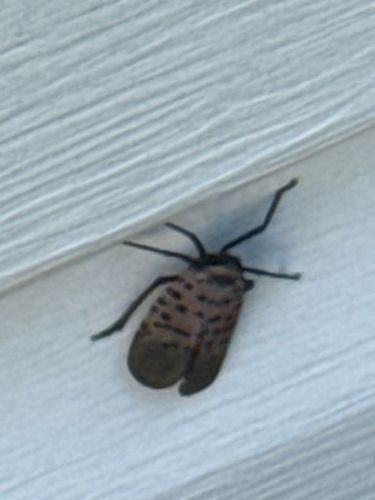Spotted Lanternfly
Scientific Name: Lycorma delicatula
Order & Family: Hemiptera, Fulgoridae
Size: Adults are approximately 2-2.5 cm (0.8-1 inch) long and about 1.2 cm (0.5 inch) wide.

Natural Habitat
Found on a wide variety of plants and trees, particularly the Tree of Heaven (Ailanthus altissima), grapevines, fruit trees, and various hardwoods. They prefer disturbed and agricultural areas.
Diet & Feeding
Feeds on the sap of over 70 types of plants, including agricultural crops (like grapes and fruit trees), ornamental plants, and forest trees, using their piercing-sucking mouthparts.
Behavior Patterns
Adults are active from summer through late fall, laying eggs in masses covered with a waxy, mud-like substance. Nymphs hatch in spring and go through several instars before maturing. They often aggregate in large numbers on host plants, excreting large amounts of 'honeydew'. They can jump and fly short distances.
Risks & Benefits
Potential risks: Severely damages agricultural crops (especially grapes and fruit trees) and forest trees, leading to economic losses. Their feeding also leads to the excretion of honeydew, which promotes the growth of sooty mold, reducing photosynthesis and fruit quality. No known direct benefits to humans or the ecosystem, but are considered a significant invasive pest.
Identified on: 9/18/2025